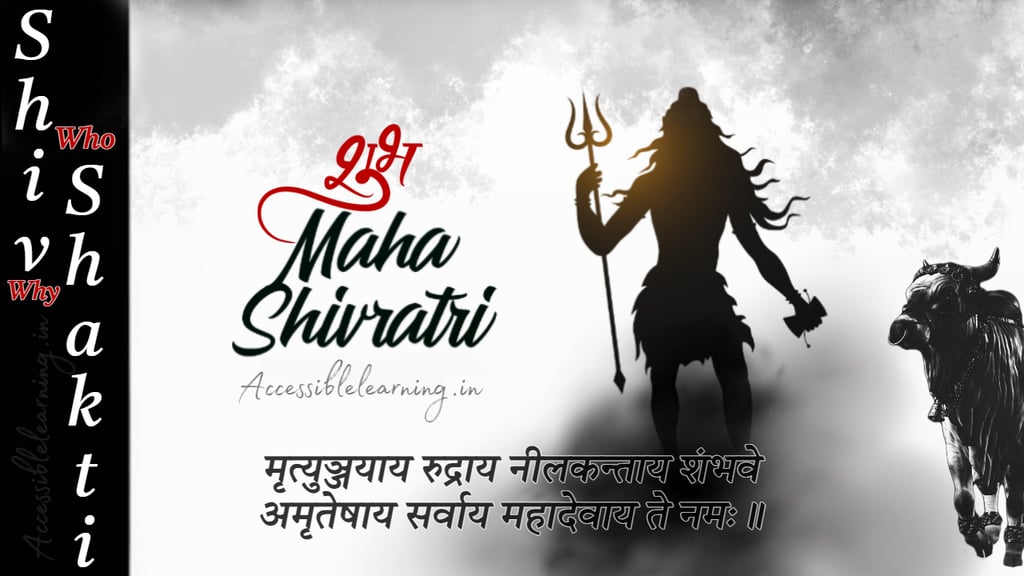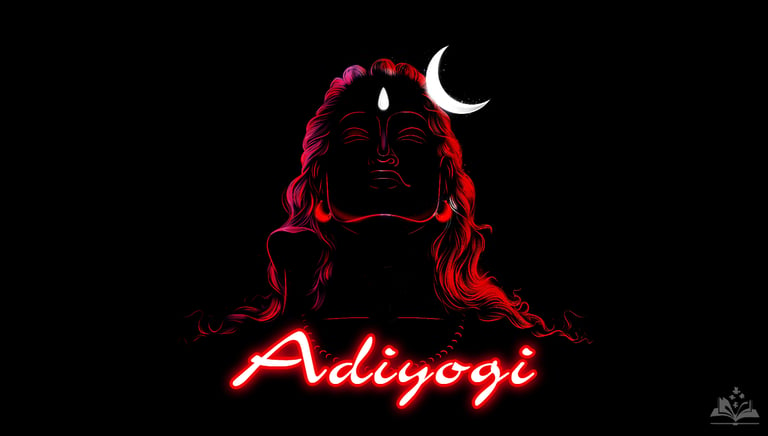
MahaShivRatri: Celebrating the Divine Union of Shiv and Shakti
MahaShivRatri holds deep spiritual and cultural significance, symbolizing the marriage of Shiv Ji and Maa Parvati, as well as marking the night of Shiv Ji's cosmic dance, known as the Tandava.
CULTURE/TRADITIONSTORY/ENTERTAINMENTCELEBRATION/FESTIVALSINDIA/BHARAT
Sachin K Chaurasiya
3/5/20243 min read


Mahashivratri, also known as the Great Night of Shiv Ji, is one of the most important festivals in Hinduism, celebrated with great enthusiasm and devotion across India and among Hindu communities across the world. Celebrated on the 14th night of the waning moon in the month of Phalgun (February–March), Mahashivratri has deep spiritual and cultural significance, marking the marriage of Shiv Ji and Maa Parvati Ji, as well as the night of Shiva's Ji cosmic dance. Also shows. Known as Tandava.
The Story of MahaShivRatri
According to Hindu mythology, Mahashivratri commemorates several events. One of the most popular stories is the marriage of Shiv Ji, the destroyer and changer, and the incarnation of divine energy in the Hindu Trinity, Maa Parvati Ji, Shiv Ji's wife. Legend has it that Maa Parvati performed intense penance to gain the affection of Shiva, who had renounced the material world and was absorbed in meditation. Impressed by her devotion and determination, Shiv Ji agreed to marry her on the auspicious night of Mahashivratri. This union symbolizes the harmonious balance between the masculine and feminine energies, known as Shiv and Shakti, respectively, essential for the sustenance of the universe.
Another important aspect of Mahashivratri is the belief that it marks the night when Shiv Ji performs the cosmic dance of creation, preservation, and destruction, known as Tandava. It is believed that during this divine dance, Shiv Ji dissolves the old cosmic order, paving the way for the creation of a new order, reflecting the eternal cycle of life, death, and rebirth.


Shiv & Shakti
Shiv Ji, often referred to as Mahadev or the Great God, is one of the principal deities in Hinduism, revered as the supreme being who transcends all dualities and contradictions. He is depicted as the ascetic yogi adorned with serpents, the crescent moon on his matted locks, and the third eye on his forehead, symbolizing his transcendental knowledge and powers of destruction. Shiv Ji is revered as the destroyer of ignorance and the ultimate liberator who guides souls towards spiritual enlightenment.
Maa Parvati Ji, also known as Shakti or Devi, is the divine consort of Shiv Ji and represents the feminine energy of the universe. She embodies various aspects of femininity, including grace, beauty, fertility, and nurturing. Maa Parvati is depicted as the ideal wife, mother, and goddess of love and devotion (भक्ति). Together, Shiva and Parvati symbolize the divine union of Purusha (the male principle) and Maa Prakriti (the female principle), essential for the cosmic balance and the perpetuation of life.
Celebrations
The celebration of MahaShivRatri varies across regions but typically involves fasting, night-long vigils, meditation, chanting of prayers, and offering of fruits, flowers, and milk to Shiva's Ji idol, or Lingam (a phallic symbol representing Shiv Ji's energy). Devotees visit Shiv temples, perform Abhishekam (ritual bathing of the Lingam), and participate in Bhajans (devotional songs) and Kathas (narratives) depicting the glory of Shiv Ji.
In addition to its religious significance, MahaShivRatri holds cultural importance as a festival that fosters unity, devotion, and spiritual introspection among people of diverse backgrounds. It is a time for individuals to reflect on the transient nature of existence, seek blessings for spiritual growth, and reaffirm their commitment to righteousness and inner transformation.
Beyond Religion!
MahaShivRatri transcends religious boundaries and holds relevance for people seeking spiritual enlightenment and inner peace. The symbolism of Shiv Ji's cosmic dance reminds us of the impermanence of life and the cyclical nature of existence. It teaches us to embrace change, let go of attachments, and strive for spiritual evolution.


Moreover, the divine union of Shiv and Shakti symbolizes the interconnectedness of all beings and the harmonious coexistence of masculine and feminine energies within each individual. It inspires us to honor and respect the diversity present in the world and recognize the inherent divinity within ourselves and others.
In essence, MahaShivRatri serves as a reminder of the eternal truth that transcends religious dogma—the truth of oneness, unity, and the divine presence that pervades the entire cosmos. It invites us to delve deeper into our spiritual essence, awaken the dormant divinity within, and embark on the path of self-realization and liberation.
As the auspicious night of MahaShivRatri approaches, let us immerse ourselves in devotion, contemplation, and divine grace, seeking blessings from Shiva Ji and Goddess Parvati for inner transformation, peace, and spiritual fulfillment. May the sacred vibrations of this celestial occasion uplift our souls and lead us closer to the eternal truth that lies beyond the realm of words and rituals.
🙏🙏🙏Har Har Mahadev!🙏🙏🙏
Subscribe to our newsletter
All © Copyright reserved by Accessible-Learning
| Terms & Conditions
Knowledge is power. Learn with Us. 📚


